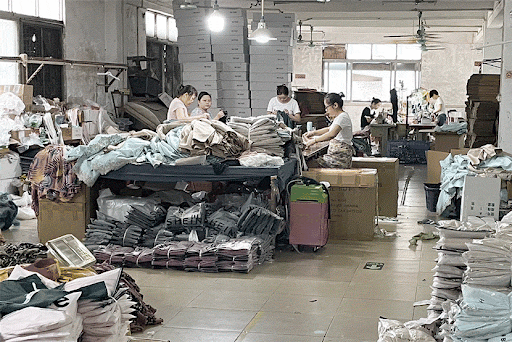SHEIN is an online fast fashion retailer founded in 2008 by Chris Xu. However, during the first lockdown of 2020 SHEIN significantly increased in popularity due to tiktok- a video sharing app where young adults share video snippets of their lives. SHEIN’s incredibly low prices attract many young adults to spend hundreds of pounds on items they do not need. However, were first drawn to buy them because of the seemingly extreme low pricing. Presently, on TikTok the “#shein” has 13.8 billion views. These video reviews encouraged more and more people to buy from SHEIN. Unfortunately, this trend quickly got out of hand as people started to purchase more than 100 items in each order, most notably tiktoker @jasminscloset reportedly spent £1074 in April this year. This is a prime example of overconsumption, one of the biggest problems with the fashion industry today.
Overconsumption is the creation of fashion waste through the excessive purchasing of products. According to Jennifer Baumgartner “the majority of people wear 20% of their closet”. So when a young adult buys 60 items from shein chances are they will only consistently wear 12 items leaving the other 48 items to be wasted. These items that are worn are also not manufactured to be long lasting, using cheap materials which will inevitably deteriorate causing the customer to be forced to dispose of the item. Eventually, when these clothes are thrown out they take 80 years to decompose in landfill as reported by “my sister’s closet”. According to the Worldbank, fashion is the second most polluting industry in the world contributing to 10% of the world’s emissions. Shein is actively encouraging this overconsumption and overproduction adding approximately 500 new items to their website a day.

This overconsumption is having a serious effect on the environment, but there are also other issues with the manufacturing of shein products. Fast fashion is often made in sweatshops that use unsafe working conditions and child labor. UNICEF estimates that 168 million children between the ages of 5 and 17 are engaged in child labor. Unfortunately there is a lack of information and transparency from SHEIN. On their website they state “we strictly abide by child labour laws in each of the countries we operate in”. However, these laws fluctuate, for example in Bangladesh child labour laws allow children as young as 14 to work. This is already incredibly unethical, but due to the mass rise of purchases made from SHEIN, throughout COVID-19, the number of children in child labour will have increased as well.
But how can we help to prevent unethical and unsustainable brands? One way we can prevent overconsumption is by donating unwanted clothes to charity shops or to friends, to stop it being thrown in landfill. Also, by not buying clothes which are micro-trends, clothes which are trendy for a couple of months, which you wear for a couple months, but as soon as the trend has finished, you never wear again. Instead you can buy timeless items that you like, regardless of what is in style. Also, support smaller, ethical and sustainable brands that you can easily find on Etsy or TikTok. This is a very worrying and important topic, which needs to be addressed. By helping to spread awareness and educating people, we can reduce fast fashion, eliminating brands, such as SHEIN, which exploit workers and have many negative impacts on the environment.
By Harriet Scott

